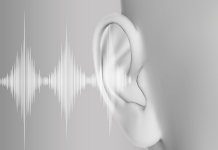The migraine, which results in visual damage, is a rare condition where the person suffers from temporary visual loss or single-eye blindness. These migraines are termed as ocular migraines. They occur due to the reduced blood supply towards the retina or smooth muscle spasm around the vessels within the retina or beyond the eye. During the ocular migraine, the vision of the person returns to normal within 50-60 minutes. These migraine attacks are painless, and they can occur with or without the presence of migraine headaches. Unfortunately, you must have heard of the term ocular migraine describing the condition known as migraine aura or visual migraine, which is usually experienced by people suffering from migraine, and they have temporary vision loss for around 30 minutes. The visual migraine, however, affects both the eyes simultaneously.
No time to read? watch this video….
The symptoms associated with ocular migraines are the appearance of a blind spot that affects the central vision of any of one eye. With time, the blind spot gets wider and makes it impossible for the sufferer to read, drive, write, or perform daily rituals. In some cases, the entire visual field of the single eye gets affected with the episode lasting for around an hour or so. When the symptoms of ocular migraine are compared to visual migraines, the later appears suddenly with the sensation of visualizing through the broken window. The aura during this type of migraine moves through the visual field and finished within 30 minutes. You feel like a zigzag ring around the blind spot. It feels like a moving blind spot within the center or present within the visual field or the blind spot that migrates through the visual area. The symptoms linked with a visual migraine last for around half an hour and affect both the eyes. So, to make sure whether you are suffering from ocular or visual migraine, cover the eyes in which you feel the blind spot. If the blind spot is felt in one eye, then it’s most likely ocular migraine, otherwise its visual migraine.
So, let’s dive in to find out what the real cause behind the ocular migraines is? The reason is similar to migraine headaches. These migraines also occur due to a genetic basis. Different studies indicate that most people who have a history of family members suffering from migraine headaches are more likely at risk to suffer from migraine headaches. WHO illustrates that these headaches stimulate due to the activation of precise mechanisms in the brain where the inflammatory substances are released within the blood vessels present in the brain or head. The CT scans, MRI, and X-rays illustrate that these blood flow changes within the brain lead to the migraine auras and ocular headaches. The common triggering factors influencing the stimulation of ocular migraines include foods like cheese, drinks like red wine, caffeinated beverages, chocolates, or smoked meat. Certain food additives, along with the artificial sweeteners, can also activate the migraine headaches. Other triggering factors like strong odors, flashing lights, disturbed sleeping patterns, smoking, or emotional disturbances can also cause migraine headaches.
The treatment and prevention options for migraine include a daily diary for noting down the triggering factors leading to a migraine attack. You can immediately consult the doctor and discuss the symptoms with him. Other than the therapeutic options, you can prevent the headaches by eating healthy foods, sleeping well at night, avoiding stress at work, and stay away from emotional situations. Keeping yourself away from common migraine triggers can prevent you from any visual disturbance due to ocular migraines, so be aware and remain cautious!
Until Next Time,
Team Doctor ASKY!





















